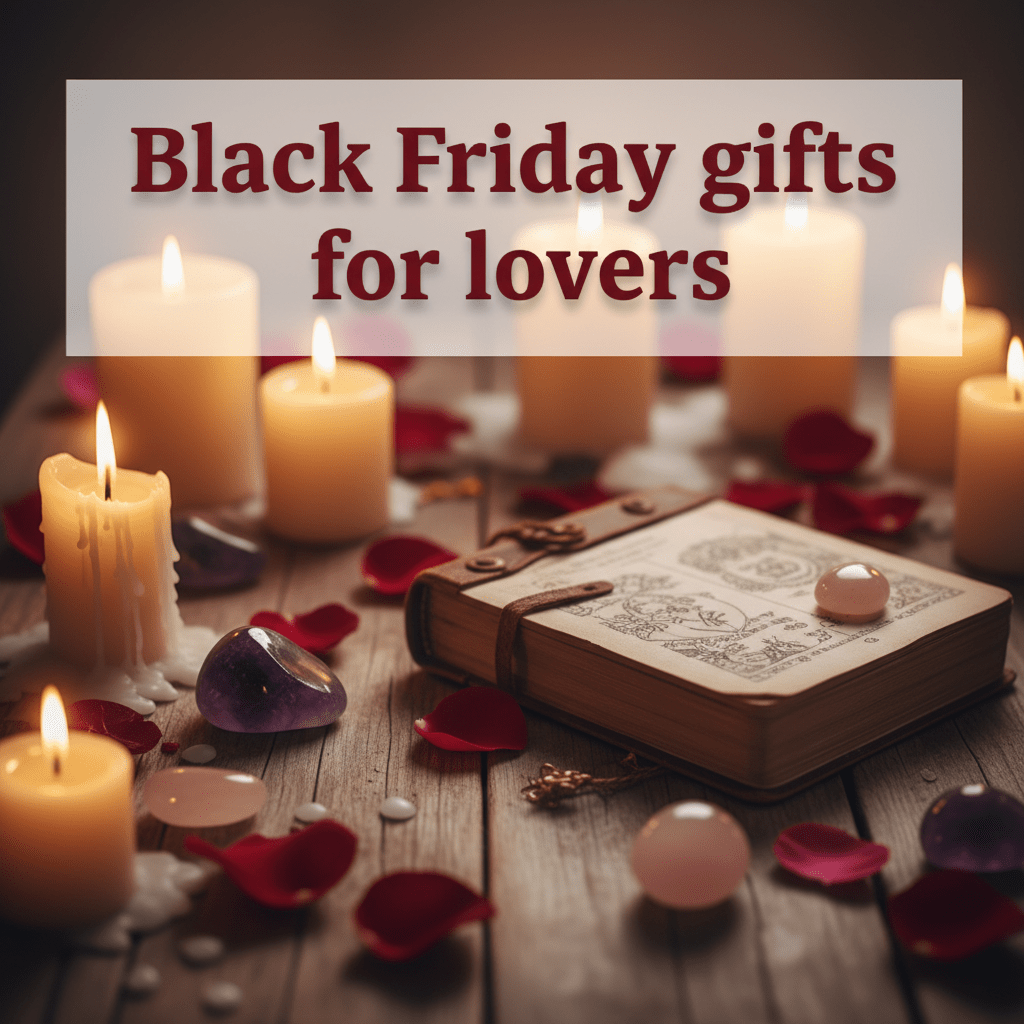Witchcraft is a practice that has been shrouded in mystery and misconceptions throughout history. Often associated with dark magic, spells, and rituals, it has been the subject of fascination and fear for centuries. But despite its notoriety, many people remain curious about what witchcraft really is and how it operates.

At its core, witchcraft is a form of spiritual practice that involves tapping into the natural world and harnessing its energy to create change. It draws upon ancient traditions and beliefs, using tools such as herbs, crystals, and symbols to connect with the spiritual realm. The practice of witchcraft can be deeply personal and is often guided by intuition, with practitioners developing their own unique approach over time.
Understanding Witchcraft Practices
Witchcraft is a spiritual practice that dates back centuries and is still widely practiced today. At its core, witchcraft is a belief system that emphasizes the power of the individual to connect with nature, the universe, and their own inner selves. It is a diverse practice that can vary widely from person to person and from tradition to tradition.
Witches have their own unique set of beliefs, which may include the worship of multiple gods and goddesses, the practice of divination and spellcasting, and a reverence for nature and the cycles of the earth. These beliefs are often passed down through generations and can be deeply ingrained in a practitioner's personal identity.
One of the most significant aspects of witchcraft is the practice of rituals. These can include everything from simple daily practices to elaborate ceremonies that may involve intricate rituals, spells, and other tools. These rituals are designed to help practitioners connect with their inner selves, draw on their own power, and align themselves with the natural world.
Elements of Witchcraft
Witchcraft often involves the use of various elements and tools to help facilitate rituals and spellcasting. Some of the most common tools used in witchcraft include herbs, crystals, candles, and symbols. These items are often chosen for their specific properties, such as their ability to promote healing, attract positive energy, or banish negative forces.
Many witches also use the four classical elements of earth, air, fire, and water in their rituals. These elements are considered to be fundamental building blocks of the universe and are believed to hold various properties and energies that can be harnessed by practitioners.
Rituals in Witchcraft
Rituals are an integral part of witchcraft, and there are countless types of rituals that practitioners may engage in. Some rituals are designed to mark specific events, such as the changing of the seasons or the birth of a child. Others may be intended to promote healing, attract love, or banish negative energy.
One of the most well-known types of witchcraft rituals is spellcasting. Spells are often performed using various tools and ingredients, such as candles, crystals, and herbs. They are designed to help practitioners achieve their goals, whether that's to attract abundance, find love, or banish negativity from their lives.
Exploring the Beliefs in Witchcraft
At the heart of witchcraft is a deep belief in the power of the individual to affect change in their own lives and in the world around them. This belief is often referred to as magick, and it is central to many witchcraft practices.
Witches also believe in karma, or the idea that our actions have consequences that will come back to us in some form. They may also recognize the power of personal responsibility and the importance of taking ownership of one's own life and actions.
Another core belief in witchcraft is the concept of personal power. Practitioners believe that we all have the ability to tap into our own inner strength and wisdom to achieve our goals and overcome obstacles. This sense of personal power is often cultivated through rituals, meditation, and other spiritual practices.
The Elements of Witchcraft
Witchcraft is a practice that involves the use of various tools and elements to harness energy and direct it towards a specific goal. Here are some of the most commonly used elements in witchcraft:
| Elements | Description |
|---|---|
| Herbs | Herbs are commonly used in witchcraft to create potions and incense. Each herb possesses unique properties that can be attributed to certain intentions. |
| Crystals | Crystals are believed to possess energy that can be harnessed and used in spell work. Each crystal has a unique energy that can be utilized for different purposes. |
| Candles | Candles are used in various types of spell work and rituals. Different colors are associated with different intentions, such as love, prosperity, and protection. |
| Symbols | Symbols are often used in spell work to represent a specific idea or intention. Common symbols in witchcraft include the pentacle, the moon, and various runes. |
Witches also believe in the power of the elements, which include earth, air, fire, and water. Each element possesses its unique energy that can be harnessed and used in spell work.

The Use of Spells in Witchcraft
Spells are an essential part of witchcraft, and they are often used to manifest a desired outcome. Spells can range from simple candle magic to elaborate ceremonies, and they are often tailored to the specific intention of the caster.
Some of the most common spellcasting techniques include visualization, where the caster focuses on a specific intention while visualizing it coming to fruition, and written spells, where the caster writes out their intention and burns the paper to release its energy.
It is important to note that spells should always be cast responsibly and with a clear intention. Witches believe in the concept of the threefold law, which suggests that any energy put out into the universe will return to the caster three times over.
By using the various elements and tools associated with witchcraft, witches harness energy and direct it towards their desired outcome. Whether it's casting a love spell or performing a healing ritual, witchcraft is a powerful practice that has been used for centuries to manifest change and create a better world.

Rituals in Witchcraft
One of the most distinctive features of witchcraft is its use of rituals. These ceremonies may involve chanting, incantations, and the use of various items and tools. Here are some of the most common types of rituals in witchcraft:
Initiation Ceremonies
Many witchcraft traditions require members to undergo an initiation ceremony before becoming a full-fledged practitioner. These ceremonies can vary widely in their specifics, but they often involve a symbolic death and rebirth, along with an attunement to the elements and the spiritual forces that govern the universe.
Blessing and Cleansing Rituals
Witches often perform rituals to blessing and cleans their homes, objects or themselves. These rituals can involve lighting candles, burning herbs, and calling upon the spirits to bring good energy and drive away any negativity or evil that may be present.
Spellcasting Rituals
Perhaps the most well-known type of ritual in witchcraft is the spellcasting ritual. During these events, witches focus their intention and energy on a specific desire or goal, using tools, symbols, and other elements to help channel their energy and bring about their desired outcome. These rituals often include the use of candles, crystals, herbs, and other tools that are believed to have magical properties.
While the specifics of these rituals can vary widely depending on the tradition, the practitioner, and the desired outcome, they all rely on the fundamental principles of witchcraft: the power of intention, the natural forces of the universe, and the belief that there are deeper spiritual forces at play in the world around us.
Exploring the Beliefs in Witchcraft
Witchcraft is often associated with the concept of magick, a form of energy that can be manipulated to bring about change. At its core, the practice of witchcraft is based on the belief that individuals have the power to shape their own lives and influence the world around them through their thoughts and actions.
One of the key principles of witchcraft is the idea of karma, which states that every action has a consequence. Those who practice witchcraft believe that by using their personal power to manifest positive change, they can create a cycle of positive energy that will ultimately benefit themselves and the world around them.
Personal Power
Another important belief in witchcraft is the concept of personal power. Witches believe that by tapping into their inner strength and intuition, they can harness their own unique abilities and use them to create positive change in their lives and the lives of those around them.
Through meditation, ritual, and spellcasting, witches seek to tap into their personal power and channel it into their desired outcomes. This can manifest in many ways, from a sense of increased confidence and inner peace to the ability to manifest their goals and aspirations.
- Did you know? Many people who practice witchcraft refer to themselves as "witches" or "magick practitioners" rather than using the term "wizard" or "warlock." This is because the latter terms are often associated with negative stereotypes and connotations.
The Role of Magick
Magick is a central part of witchcraft, and is often seen as the key to manifesting desired outcomes. This concept is based on the belief that by using symbols, words, and actions to direct energy, witches can influence the world around them and bring about change.
From simple spells and rituals to more complex forms of magick, such as divination and astral projection, witches use their personal power to tap into the energy of the universe and bring their desires to fruition. However, it's important to note that many witches believe in using their power for good, and do not engage in harmful or negative practices.
- Did you know? Many witches believe in the power of intention, and consider their beliefs and thoughts to be powerful tools for influencing the world around them.

Spellcasting Techniques in Witchcraft
Spellcasting is a crucial aspect of witchcraft practice, and there are various techniques that witches use to cast spells. These techniques can range from simple visualization exercises to complex rituals involving multiple tools and elements.
Visualization
Visualization is one of the most fundamental techniques used in spellcasting, and it involves using your imagination to create a mental image of your desired outcome. This technique is often used in conjunction with other techniques, such as candle magic or written spells, to enhance the potency of a spell.
Candle Magic
Candle magic is a popular technique used in spellcasting, which involves using candles as a focal point for spellcasting. Different candle colors are used for various purposes, such as green for abundance and prosperity, red for passion and love, and black for protection and banishing.
| Candle Color | Purpose |
|---|---|
| Green | Abundance and prosperity |
| Red | Passion and love |
| Black | Protection and banishing |
Written Spells
Written spells involve writing down your intention or desired outcome on paper, using symbols and runes to enhance the potency of your spell. This technique can be used in conjunction with other techniques, such as candle magic or visualization, to amplify the energy of your spell.
It is important to remember that spellcasting should be performed with caution and respect for the energies and entities involved. Witches often take measures to protect themselves, such as casting a protective circle or invoking the four elements, before performing a spell.

Supernatural Powers in Witchcraft
Witches are often attributed with supernatural abilities and powers beyond human perception. These abilities are believed to be the result of their connection to the spiritual world and the use of magick. Here are some of the most commonly known supernatural powers in witchcraft:
| Divination | Divination is the art of foretelling the future or gaining insight into a situation through supernatural means. Witches use various methods of divination, such as tarot cards, runes, pendulums, and scrying, to receive messages from the spiritual realm. |
|---|---|
| Healing | Witches are known for their ability to heal physical, emotional, and spiritual ailments through the use of natural remedies and energy work. Some witches use herbs and crystals to aid in their healing practices, while others rely on energy healing techniques like Reiki. |
| Psychic Powers | Psychic powers, such as telepathy, clairvoyance, and telekinesis, are abilities that allow witches to perceive and interact with the spiritual world on a deeper level. These powers are believed to be developed through consistent meditation and other spiritual practices. |
It is important to note that not all witches possess these supernatural abilities, and not all witches believe in or practice these powers. However, the belief in these abilities is often a central aspect of many witchcraft traditions and practices.
History, Traditions, and Evolution of Witchcraft
Witchcraft has a rich and varied history, with its origins dating back to prehistoric times. While the exact origins of witchcraft are unknown, it is believed to have originated in ancient civilizations such as Mesopotamia and Egypt. Throughout the centuries, witchcraft has evolved and adapted to suit the cultures and beliefs of different societies.
One of the most famous moments in witchcraft history is the Salem Witch Trials of 1692, where twenty people were executed on accusations of practicing witchcraft. The Trials were a product of the Puritan culture in colonial America, which viewed witchcraft as a form of devil worship.
The Evolution of Witchcraft
As society evolved, so did witchcraft. The Wiccan movement, which began in the mid-20th century, was a significant turning point in the history of witchcraft. It was a reaction against the negative portrayal of witches in popular culture, and it embraced the idea of witchcraft as a positive force. Wicca quickly gained popularity, attracting many adherents who embraced its nature-based spirituality.
| Witchcraft Traditions | Origin |
|---|---|
| Gardnerian | 1950s England |
| Alexandrian | 1960s England |
| Eclectic | 20th century United States |
Today, there are many different traditions within witchcraft, each with its own beliefs and practices. Some of the most well-known traditions include Gardnerian, Alexandrian, and Eclectic.
Witchcraft in Modern Times
Witchcraft has continued to evolve and adapt in modern times. With the growth of the internet and social media, it has become easier for witches to connect with each other and share their beliefs and practices. The popularity of witchcraft has also grown in popular culture, with books, movies, and TV shows portraying witches in a more positive light.
Despite its evolution, witchcraft still faces stigma and discrimination in some parts of the world. However, many practitioners continue to embrace their beliefs and practices, finding solace and empowerment in witchcraft's rich history and varied traditions.
FAQ - Common Questions About Witchcraft
Witchcraft can be a mysterious topic for those who have never studied the practices. Here are some answers to common questions about witchcraft spells and rituals:
Is it safe to cast spells?
Safety is essential when it comes to spellcasting. Ensure that you cast your spells with a clear intention, focus, and positive energy. Always research and choose your ingredients carefully. Avoid casting spells that may harm others, including yourself.
What are some ethical considerations when practicing witchcraft?
Witchcraft involves a deep connection to nature and the universe. Many witches adhere to the Wiccan Rede, which focuses on the principle of "harm none." It is essential to approach your craft with respect, responsibility, and consideration for the well-being of both yourself and others.
Can anyone learn witchcraft?
Witchcraft is available to anyone who has an interest and a willingness to learn. However, it requires dedication, practice, and patience. Seek out resources such as books, courses, and teachers who can guide you on your journey.
What are some common misconceptions about witchcraft?
Many misconceptions about witchcraft stem from false stereotypes perpetuated by the media. These include beliefs that witches worship the devil, cast spells for personal gain, and are involved in dark magic. In reality, most witches abide by a code of ethics and use their craft for healing, protection, and personal growth.
Can witchcraft be used for healing?
Witchcraft has a long history of being used for healing purposes. Many witches use herbs, crystals, and other natural elements to promote physical, emotional, and spiritual well-being. However, it is essential to seek out professional medical advice for serious health concerns.
What are some essential tools for practicing witchcraft?
The tools used in witchcraft vary from practitioner to practitioner. However, some common tools include a wand, athame, tarot cards, and a cauldron. Many witches also use herbs, candles, and crystals in their rituals and spells.
Do I need to believe in a higher power to practice witchcraft?
Belief in a higher power is not a requirement for practicing witchcraft. Some witches believe in deities, while others focus on the power of nature and the universe. The most important aspect of witchcraft is developing a deep connection to yourself and the world around you.




